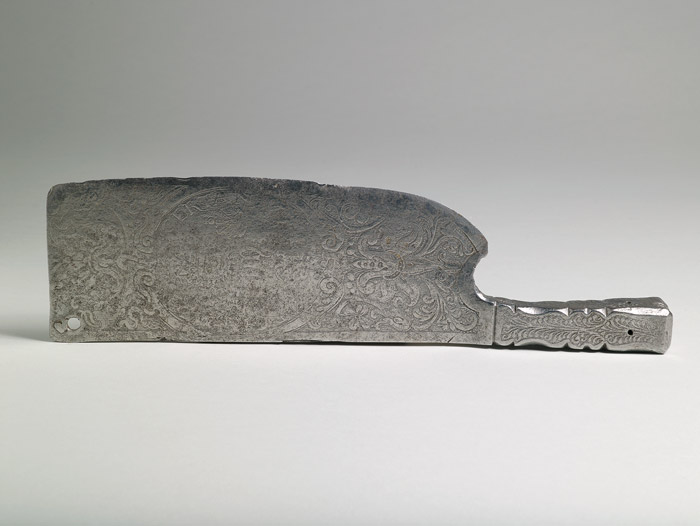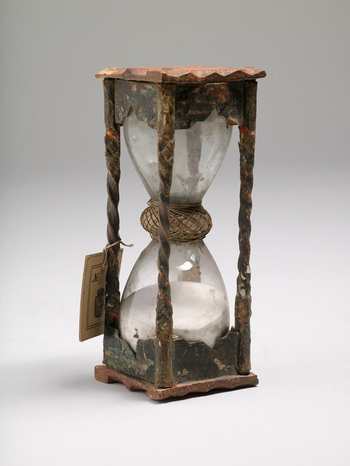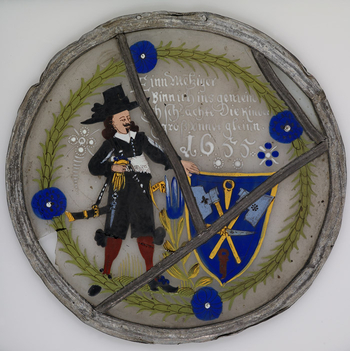Cultural History of Craftsmanship

Project duration: 2009 bis 2015
The Collection
The GNM holds one of the largest German collections of historical artefacts of craftsmanship, the so-called “Zunftaltertümersammlung” (collection of early guild artefacts). Unlike more regional collections in city or state museums, it conveys a broader and more multifaceted image of “Old Craftsmanship” of the Early Modern period. The collection consists primarily of two thematic groups: artefacts of the guilds or corporations (“Zunftaltertümer”) and workshop tools and historic workshop fittings. The focus in both collections are the especially rich holdings in Nuremberg craftsmanship.
At the Beginning is … a Razor
The memorandum “Organismus und Sammlungen” (“Organism and Collections”) of the Germanisches Nationalmuseum, published in 1856 under the directorship of the founder of the museum Hans von und zu Aufseß, already considers some of the historical craft artefacts, such as a razor, as an object of commercial services. Thus a differentiating documentation of commercial activities was, from the beginning, envisioned as one of the collection goals of the museum.
Early Guild Artefacts, Tools, Workshops
Larger numbers of corporate artefacts only entered the collection since the late 1860s, not least because in Germany craft and trade guilds existed until 1868, sometimes longer. Being part of contemporary life, there was no reason to preserve their artefacts in museums. The collection activities of the GNM, both quantitatively and qualitatively, increased from 1866 to 1891 under the directorship of August von Essenwein. One of the important acquisitions from that time are the Nuremberg early guild artefacts, since then housed and exhibited in the GNM. Despite significant new acquisitions, these pieces continue to represent the nucleus of the collection. Since the 1880s, the GNM has been able to significantly supplement its special collection through the acquisition of individual pieces. Thanks to generous donations, of which the extensive holdings of guild pewter of Kommerzienrat (councillor of commerce) Kahlbaum is one of the most important, the collection gained supraregional character. Until the early 1940s, the museum succeeded in acquiring further decorative tools and, above all, workshop fittings that either were transferred in their complete state or assembled from different, specifically selected individual purchases and exhibited as complete rooms. Since the late 1940s, the largest part of the collection has been in storage. On the occasion of the museum’s 125th anniversary in 1977, the permanent exhibition “Zunftaltertümer” was opened to the public.
Initial Situation 2009
The GNM’s collection of historical craft artefacts consists of ca. 4,000 objects and documents, roughly half of which consists of the so-called “Zunftaltertümer”, i.e. the artefacts once belonging to the guilds. The other half are tools of the different crafts, whereby decorative or exceptional pieces dominate together with tool ensembles acquired as parts of workshop fittings. At the beginning of the project, the documentation status corresponded in most cases with the accession record of the respective object, in some cases going back to the 19th century. Consequently, the completeness of the entries varies greatly. Other groups of objects, foremost the workshop fittings, were not differentiated while inventoried. In many cases, recent research was not recorded in the documentation, resulting in outdated records.
Tasks and Results
The task of the project “Cultural History of Craftsmanship” first of all is to record the entire holdings using contemporary means, to update the documentation to a state of the art research tool, and to fill in lacunae, if necessary with original research, thus creating a foundation for a future new presentation. The aim is to publish the collection in two phases: first the early modern tools, then the guild artefacts. The first part is expected to come out in 2012; the second part will be published in 2013 following the special exhibition “Zünftig! Geheimnisvolles Handwerk 1500-1800” (“’Crafty’! Mysterious Guild Craftsmanship 1500-1800), resulting in new insights into guild artefacts, among them the identification and precise description of workshop tools, as for example the oldest sausage hanger in Europe, or a “Hartschierkuse”, a knife of the imperial bodyguards in Vienna, transformed into a meat cleaver.
The collection catalogue “Werkzeug der Frühneuzeit” (“Workshop Tools of the Early Modern Period”) is already published >
order catalogue here; the second catalogue of the guild artefacts is planned for 2014. Except for a few partial holdings, the computerisation of the collection of guild artefacts (Prefix Z) will be completed by the end of 2011.
Projektmitarbeiter und -mitarbeiterinnen
Dr. Ralf Schürer
Dr. Anke Keller
Further Objects

Stundenglas der Nürnberger Schreiner, Nürnberg, 15./16. Jahrhundert

Scheibe mit Metzgerdarstellung, 1655

Information and Services
Plan Your Visit
Opening Times
Location and Approach
GNM Museum Shop
FAQ
Library
Branches
Contact
